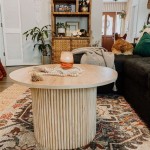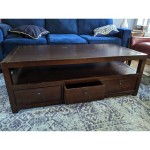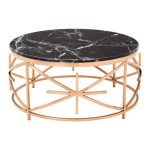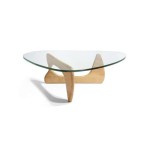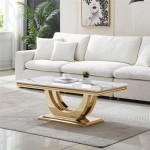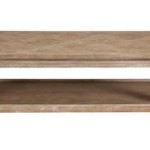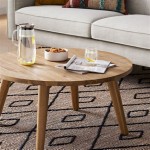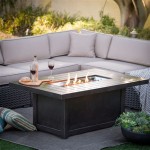Traditional Coffee and End Tables: A Timeless Pairing for the Home
Coffee and end tables are fundamental components of living room furniture arrangements. Their functionality, aesthetics, and strategic placement contribute significantly to the overall ambiance and practicality of a living space. Traditional designs, in particular, offer enduring appeal and a sense of established elegance, often complementing a range of interior decorating styles.
This article explores the key aspects of traditional coffee and end tables, delving into their distinguishing characteristics, materials, design variations, and considerations for choosing the right pieces to enhance a home environment. The emphasis will be on providing a comprehensive understanding of these furniture staples, allowing readers to make informed decisions when selecting pieces that align with their personal tastes and functional needs.
Defining Traditional Style in Furniture
The term "traditional" in furniture design encompasses a broad spectrum of styles that draw inspiration from historical periods, predominantly from the 18th and 19th centuries. These styles often incorporate elements such as intricate carvings, rich wood finishes, and classic silhouettes. Key features typically include symmetry, balanced proportions, and a focus on refined details. Common historical influences include Queen Anne, Chippendale, and Victorian eras, each contributing unique design motifs to the overarching traditional aesthetic.
Traditional furniture often utilizes high-quality materials, such as solid hardwoods like mahogany, cherry, and walnut. These woods are valued for their durability, beauty, and ability to showcase intricate detailing. Inlays of contrasting woods, veneers, and decorative hardware like brass or antique bronze pulls further enhance the visual appeal of traditional pieces. The overall effect is one of timeless elegance and sophisticated craftsmanship.
Within the realm of traditional style, there exist several subcategories, each with distinctive characteristics. Queen Anne furniture, for example, is known for its graceful curves, cabriole legs, and understated ornamentation. Chippendale furniture, on the other hand, is characterized by its more ornate carvings, ball-and-claw feet, and elaborate fretwork. Victorian furniture often features opulent details, plush upholstery, and dark, rich wood finishes. Understanding these nuances allows one to select pieces that align with a specific vision of traditional design.
Materials and Construction of Traditional Tables
The materials used in the construction of traditional coffee and end tables play a crucial role in their durability, aesthetic appeal, and overall value. Solid hardwoods, as previously mentioned, are the preferred choice for high-quality pieces. The selection of wood species influences the table's grain pattern, color, and density. Mahogany, with its reddish-brown hue and tight grain, is often associated with formal elegance. Cherry, known for its warm, reddish tones and smooth texture, offers a more inviting and versatile option. Walnut, prized for its rich brown color and distinctive grain, provides a sophisticated and timeless look.
In addition to solid hardwoods, veneers are frequently used in traditional furniture construction. Veneers are thin layers of wood applied to a substrate, such as plywood or particleboard. This technique allows for the use of rare or exotic woods without the expense of using solid wood throughout the entire piece. Skilled artisans can create intricate patterns and designs using veneers, adding to the aesthetic complexity of the table. However, the quality of the veneer and the underlying substrate are crucial factors in determining the table's longevity and resistance to damage.
The construction methods employed in traditional furniture making emphasize durability and longevity. Dovetail joints, mortise-and-tenon joints, and other time-honored techniques are used to create strong and secure connections between the various components of the table. Hand-carved details, such as fluted legs, beaded edges, and decorative moldings, add to the visual appeal and demonstrate the skill of the craftsman. The finish applied to the wood plays a crucial role in protecting the surface from scratches, stains, and moisture damage. Traditional finishes often involve multiple layers of lacquer or varnish, carefully applied and polished to create a smooth and lustrous surface.
Design Variations and Functional Considerations
Traditional coffee and end tables come in a wide variety of shapes, sizes, and designs to suit different room layouts and functional needs. Coffee tables, typically positioned in front of a sofa or seating arrangement, serve as a focal point in the living room. They provide a convenient surface for placing drinks, books, and decorative items, while also serving as a gathering place for social interaction.
End tables, also known as side tables, are typically placed beside sofas, armchairs, or beds. They provide a smaller surface for lamps, remote controls, and other essentials. End tables can also be used to display decorative objects or to provide additional storage space. The height of an end table should be carefully considered to ensure that it is comfortable to use when seated. A general guideline is to choose an end table that is approximately the same height as the arm of the sofa or chair it is placed next to.
Within each category, there are numerous design variations to choose from. Coffee tables may be rectangular, square, oval, or round, each shape offering a different aesthetic and functional appeal. Some coffee tables feature drawers or shelves for storage, while others have lift-top mechanisms that allow them to be used as a temporary dining surface. End tables may have one or more drawers, open shelves, or a combination of both. Some end tables are designed with built-in outlets or USB ports for charging electronic devices.
When selecting coffee and end tables, it is important to consider the overall style and scale of the room. Traditional tables are often larger and more substantial than contemporary designs, so it is important to ensure that they are appropriately sized for the space. The finish and upholstery of the tables should complement the existing furniture and décor. For example, a dark wood finish might be a good choice for a formal living room, while a lighter finish might be more appropriate for a casual setting.
Integrating Traditional Tables into a Modern Home
While traditional coffee and end tables may conjure images of formal, period-specific interiors, they can be successfully integrated into more contemporary settings. The key lies in balancing the traditional elements with modern accents and creating a cohesive visual narrative. This approach allows homeowners to enjoy the timeless elegance of traditional furniture while maintaining a fresh and updated aesthetic.
One strategy is to pair traditional tables with modern upholstery and accessories. For instance, a traditional coffee table with carved legs and a rich wood finish could be paired with a sleek, minimalist sofa in a neutral color. The juxtaposition of the traditional and modern elements creates visual interest and prevents the room from feeling overly formal or dated. Conversely, if the sofa is a more traditional style, the coffee table can incorporate modern elements, possibly with a glass top or metal accents, to balance the overall look.
Another approach is to use traditional tables as accent pieces in a predominantly modern space. A single traditional end table placed next to a modern armchair can add a touch of warmth and character to the room. The key is to select pieces that complement the overall color palette and design scheme, rather than clashing with them. Introducing traditional elements through accessories, such as antique lamps or framed artwork, can further enhance the integration of traditional tables into a modern home.
The juxtaposition of textures and materials is also crucial. Pairing a traditional wood table with a rug made of natural fibers, such as jute or sisal, can create a sense of warmth and texture in the room. Metal accents, such as brass lamps or chrome hardware, can add a touch of modernity and sophistication. The careful selection of accessories can further enhance the overall aesthetic and create a cohesive and inviting space.
Maintaining and Caring for Traditional Tables
Proper maintenance and care are essential for preserving the beauty and longevity of traditional coffee and end tables. The type of care required will depend on the materials used in the table's construction and the type of finish applied. However, there are some general guidelines that apply to most traditional tables.
Regular dusting is crucial for preventing the buildup of dust and dirt, which can scratch the surface of the wood. Use a soft, lint-free cloth to dust the table regularly. Avoid using abrasive cleaners or cloths, as these can damage the finish. For more thorough cleaning, use a mild soap and water solution. Dampen a cloth with the solution and gently wipe the surface of the table. Be sure to dry the table thoroughly with a clean cloth to prevent water damage.
Protecting the table from scratches, stains, and moisture damage is also important. Use coasters under drinks to prevent water rings from forming on the surface. Use placemats or tablecloths when serving food to protect the table from spills and stains. Avoid placing hot items directly on the table, as this can damage the finish. If a spill occurs, clean it up immediately to prevent it from setting in.
For tables with delicate finishes or intricate carvings, it is best to consult with a professional furniture restorer for advice on proper care and maintenance. Restorers can provide specialized cleaning and polishing techniques that will help preserve the table's beauty and value for years to come. Periodic polishing with a high-quality furniture polish can also help to protect the finish and enhance its luster.
By following these simple guidelines, one can ensure that their traditional coffee and end tables remain beautiful and functional for generations to come. These pieces, when properly cared for, can become cherished heirlooms that add character and elegance to any home.

Anondale Traditional Coffee Table

Traditional Coffee Table Luxury With Glass Top For Villa Idfdesign

Traditional Luxury Coffee Table Carefully Carved For Livingroom Idfdesign

3pc Occasional Table Set Espresso Formal Traditional Coffee 2x End Tables Faux Marble Top

Traditional Coffee Table W Storage 2 Tier Wood Circle Accent Living Room

Dark Cherry Finish Traditional Coffee Table W Black Marble Top

Traditional Wooden Tea Coffee Table With Drawers Handcrafted Solid Wood Natural Center Piece Made In Com

Coffee Table Set Traditional 3 Piece Wooden

Pullman Traditional Round Wooden Coffee Table In Antiqued Black Finish

2 Piece Traditional Coffee Table And End Set In Bourbon Iron 1 Kroger
